






In our personal lives, the end of each year brings time for reflection on how the year has passed and a glimpse, and a hope at, what is to come in the upcoming year. In our professional lives, we often do the same and so it is with APTA New York.

The beginning of this year saw us emerge from the COVID pandemic in a way that had changed the way we all interact with our patients, our co-workers and society.
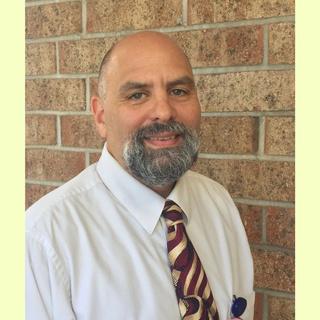
We emerged changed as a people and as a profession in how we approach each new day, for many resuming regular in-person caseloads are now being balanced with telehealth visits, a new arena in our health care continuum advanced in its arrival by the COVID-19 pandemic This new mode of treatment will allow for our profession to develop and grow in our efforts to manage the health and wellness of our patients throughout the continuum of care. As an organization we have instituted hybrid and Zoom only meetings to increase our ability to be more nimble in handling arising issues in our profession
This strategy allowed APTA New York to respond swiftly and collaboratively in response to recent concerns over Physical Therapists utilizing Blood Flow Restrictions (BFR) techniques. Thanks to concentrated efforts and working with the State Board and Office of the Professions, and our legislative counsel we had an early Thanksgiving celebration when we were informed the use of BFR Techniques is appropriate to be performed by trained therapists. Our commitment to increasing accessibility to the board and creating new ways to interact with members is being cultivated into upcoming townhall-type Zoom meetings to allow for an increased level of exchange of information between APTA New York Leadership and membership at large.
We will need to use our voice as a profession to advocate for our profession in all areas of healthcare regardless of our personal practice setting As an organization, we need to be able to educate membership to help support legislative efforts affecting patient access to care to physical therapy. In the coming year, APTA is supporting legislation introduced which will change PTA supervision levels in private practice setting under Medicare B from “direct” to “general” supervision ,to increase patient access to care, and decrease administrative burden.
Additionally, Medicare and Medicaid services released the 2023 fee schedule in which physical therapy and 26 other professions will be experiencing a decrease in rates. These are two areas in which everyone’s support is needed. If you don’t know how or where to have you voice be heard please go to APTA’s Patient Action Center If you are interested In APTA New York’s public policy efforts for the year, or opportunities to assist in advocacy go to the APTA New York website or use this link.
In the coming year we will be looking for opportunities to advocate for patient access to our professional services, ways
to reduce administrative burden and to improve our collaboration with members and stakeholders to become a more unified voice in representing our profession
 APTANEWYORKPRESIDENT, MIKETISBE
APTANEWYORKPRESIDENT, MIKETISBE

We are always looking for new, fresh, and interesting content to share in our upcoming newsletters

If you have an article, a story, or something fun to share, we want to hear about it!


Keiko Ho is a life-long physical therapist who has been an APTA member for 10 years! She is an extremely compassionate person and loves what she does
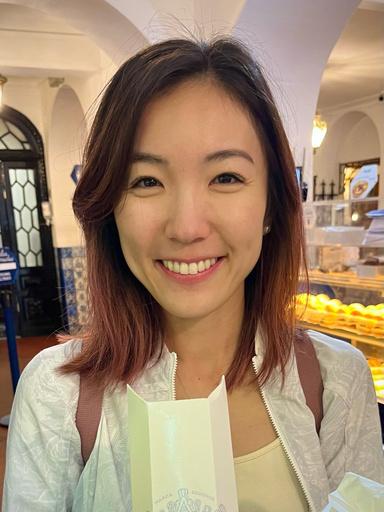
She talks about how physical therapy has helped her active lifestyl!
Read more about Keiko's passion for physical therapy and her background below!
Theresa Marko is an extremely active member of the APTA New York community! She is our current Federal Affairs Liaison and is also a member of the APTA New York Nominating Committee!
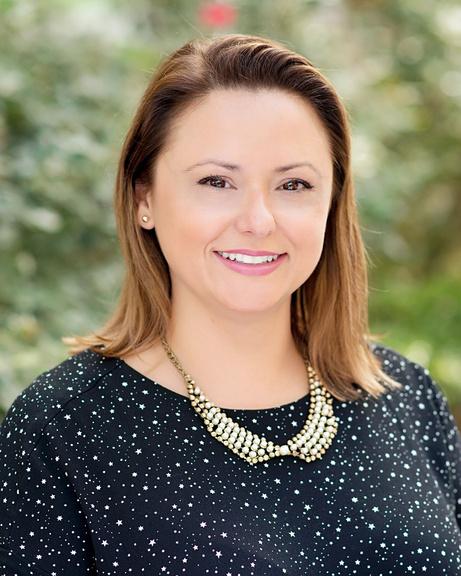

In her interview, she talks about her love of French Bulldogs, her world travels, and how she works to change the profession each and every day.
Read more about Theresa's passion for physical therapy and her background below!
The Fall Board of Directors Meeting was held on October 7th, 2022 in a hybrid format. Below is a summary of the Motions approved and some discussion topics. Please refer to the Fall BOD draft minutes on the website for more detail.
The APTA New York 2023 Proposed Budget which was amended by adding a new line item under Expenses: Chapter Committees titled “Other Consultants to the Board” in the amount of $489.12 in order to provide funding for the Federal Affairs Liaison to attend one APTA New York Board of Director’s meeting during 2023.It will be funded by decreasing the Archivist budget line item for 2023 to $0 In addition, amended the budget to increase funding for the directors’ intern program in the amount of $2,000 and to reduce the expense line item for the conference to $28,000

That the APTA New York Policy Manual Section 5. Finance Committee – Financial and Budget Policies, 2. Mandatory Funding. #13. be amended by striking the word “and” prior to “all committee chairs,” and inserting the words “and other consultants to the Board”.
Extended the deadline for the completion of the website project from October 31, 2022 to the Spring 2023 Board of Directors Meeting Approved a special project in the amount of $2,400 for the Marketing and Engagement Committee for the purpose of a marketing campaign to target specific groups of non-members, particularly in Districts with the lowest proportion of APTA New York physical therapist and physical therapist assistant members. Emphasis should be on the value that APTA New York brings to membership and the profession as a whole Adopted the 2023 Public Policy Priorities as printed.

Discussed restructuring of the BOD and Annual Reports for Districts and Committees with more guidance on addressing goals and structuring district events to address the goals. Discussed the use of Basecamp for Chapter discussion, document sharing and communication Discussed APTA New York Conference 2023 Format. Suggested a Friday night keynote and social event and Saturday full day and half day educational sessions. Also suggested virtual or in person research platform sessions Delegate Forum the evening before Delegate Assembly-discussed options of allowing Delegates to ask question of the candidates in a panel setting. Discussed the Judicial/Reference Committee as a Resource for Policy and Motion Writing.
PTA Engagement-discussed strategies to engage PTA members and nonmembers Suggestions included having a PTA specific course at the 2023 conference; bringing a motion to the 2024 HOD to change the terminology used for the PTA; increase leadership opportunities at the District and Chapter level; increase the resources for job seeking and expand the PTA Committee Passage of the PTA Licensure Bill- thank you to everyone who worked on getting this bill passed. Discussion will take place at the 2023 Delegate Assembly to continue momentum on engagement and moving forward. Mentorship Task Force Report/ Leadership/Mentor Program. Discussed the report with several suggestions: present lectures and workshops by the Past Presidents Council at the Leadership Workshop (LDW); maintain a list of participants at the LDW and share them with the Districts; build in transitional terms to give individuals time to step into positions and have committees structure terms to allow individuals time to learn the position. Reinforced that mentorship is a time and energy investment.

Member at Large (MAL) role on the EC- discussed ways to improve communication between the Board of Directors and the EC Use of Basecamp may be a good option.
Discussed how to better engage with Members as a Board. Suggested an open forum a few times a year and advertise on social media for members and nonmembers so that the actions of the chapter can be reported out. Also suggested allowing for Q&A. A motion was approved to charge the Executive Committee with holding a listening session prior to a future BOD meeting Discussed increasing the frequency of hybrid Board of Directors meetings. Should we invite members at those meetings to increase engagement? It could possibly lead to increased member engagement but could lead to decreased networking done at in-person meetings. Discussion involved alternating hybrid meetings every other year.
The Winter BOD meeting will be held on Saturday, January 14, 2023 beginning at 9:00 am.
 Marcia Spoto, Public Policy Committee Chair
Marcia Spoto, Public Policy Committee Chair
As 2022 is coming to a close, it is a good time to reflect on all that has happened on the public policy front.
In June of this year, the Office of the Professions provided the Chapter office with an interpretation that advised that the practice of Blood Flow Restriction (BFR), as an adjunct to exercise interventions, was not within the scope of practice for physical therapists. In response, a letter was written by the Chapter, in consultation with legislative counsel, and sent to the Deputy Commissioner of the NYS Office of the Professions as well as the Executive Secretary of the Board The chapter then received a response from the Deputy Commissioner in August, requesting additional information on the practice of BFR. The Chapter, in collaboration with physical therapists possessing expertise on BFR, developed a comprehensive response to the Deputy Commissioner, which was submitted at the end of August.
Since this time, chapter leadership has worked closely with the Office of the Professions and PT licensing board to address this issue We are pleased to report that as of November 22, the Executive Secretary of the PT licensing board informed the chapter that they have reconsidered the initial interpretation, and issued a letter that states, in part, the following: 'it has been determined that BFR is neither within the protected scope of practice of physical therapy nor is it restricted under New York Education Law. Therefore, BFR is an intervention that can be performed by anyone, including physical therapists and other professions licensed and registered under Title VIII of the NYS Education Law as well as unlicensed persons' The communication goes further to indicate that PTs utilizing BFR should ensure that they are competent (receive specific training) in the practice of BFR.
Members can access the law and rules here.
Lobby day was held virtually again this year on May 12, 2022, when legislators were out of session Both assembly and senate meeting summary reports indicated that, overall, participants reported a positive experience with legislative meetings Additionally, a survey went out following lobby day to gain feedback on the process and experience of all participates.
Based upon survey responses, the association will make modifications to improve the process. This will include the provision of more resources for members interested in getting involved. The virtual format presents unique challenges, and although in-person meetings have been the standard, the virtual format may be the most reasonable option in the future Based upon survey results, by a small margin, virtual meetings are preferred by members
Successes this year included passage of the PTA licensure bill (see below), and although the ATC SOP bill passed senate, it did not move out of assembly.
After many years of lobbying for PTA licensure in NYS, the PTA licensure bill finally was passed in the state legislature Governor Hochul signed the bill on August 17, and the new bill will take effect 18 months after the signing This was considered a significant win for all PTAs in NYS, as well as APTA New York.

Although APTA New York has been unsuccessful in advancing the Direct Access bill, which would remove the current restrictions including the 3-year practice requirement, and the need for patients to obtain a medical referral after 10 visits or 30 days, we continue to lobby for the bill (S3923/A9248). The bill has a new assembly sponsor, representative Sarah Clark (district 136). There is only one group opposing unrestricted direct access, the New York Society of Orthopaedic Surgeons (NYSSOS) Chapter leadership will continue to work with stakeholder groups to advance the bill, and the chapter is considering funding a more prolonged and multifaceted campaign in 2023. Please look for updates and ways to get involved.
The chapter will be introducing legislation in 2023 that would change the minimal educational requirements for licensure in NYS from the Masters’ degree to the Doctor of Physical Therapy degree. This would align our educational requirements to a level consistent with other states, and also consistent with the current status of PT education whereby all programs are at the DPT level

APTA and the Private Practice Section have come together to create a State Payer Advocacy & Resource Center (SPARC) to assist members in addressing prior authorization and utilization management issues This member benefit consists of a collection of tools that can be found here: SPARC

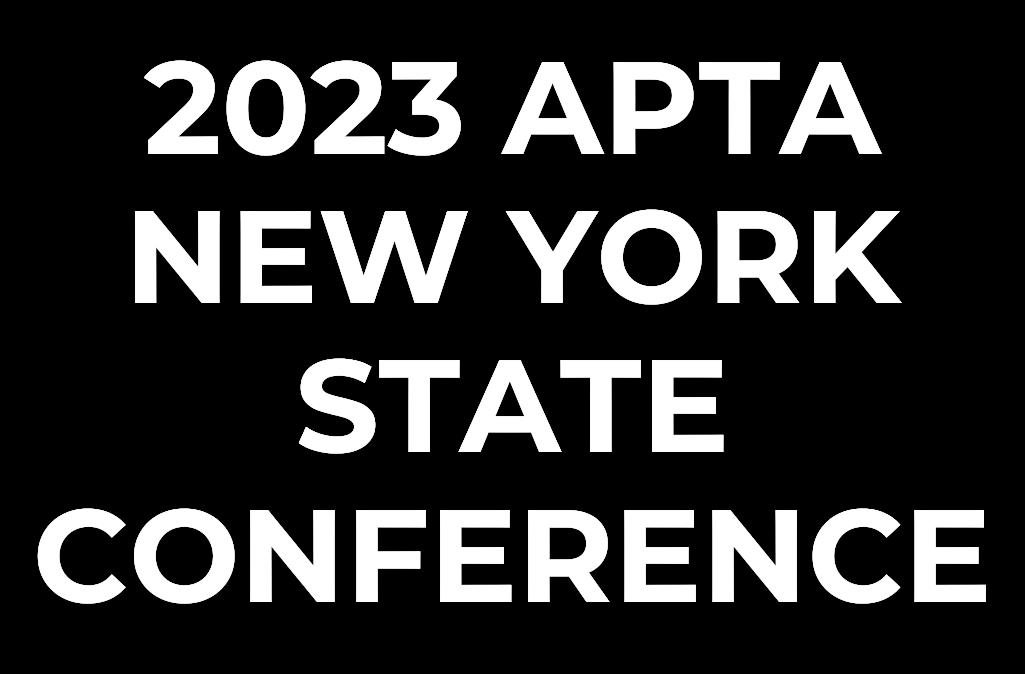

As always, please feel free to reach out to the Public Policy Committee, or myself, if you have questions or want to provide input.

The APTA New York Board of Directors (BOD) approved the 2023 budget with minor amendments at their fall meeting on October 7th. The amendments included the addition of funding for the Federal Affairs Liaison to attend one board meeting in 2023 and reinstate the Director’s Intern program in 2023 In order to balance the budget, funding for the archivist and 2023 conference were voluntarily reduced. The formation of the budget begins in early summer when our executive director, Kelly Garceau, and bookkeeper, Lin Morin, estimate the expenses for the leadership and committees to compile a rough draft budget. The Finance Committee (FC) then meets later in the summer to create a draft of the budget to be posted for comment and submitted to the BOD for approval The current FC consists of the Treasurer, Mike Huson as chair, and members William O’Keefe (Long Island), Alanna Pokorski (Western), Kyle Adams (Central), and the President, Michael Tisbe (ex officio).

Overall, 2021 was a fiscally successful year with a $27,232 surplus.Our expenses were $11,348 below budget with our income $15,894 above budget. In regards to dues income, due to very conservative budgeting, 2021 finished with a $53,554 surplus, but our non-dues revenue was down
Dues income in 2022 has been steadier with less month-to-month fluctuations than the past 2 years with the third quarter being our strongest quarter. This is most likely due to a partial recovery from the pandemic as well as the full rollout of the APTA’s monthly dues payment system Dues income for 2022 through September are $383,177 putting us on track to collect approximately $511,000 by the end of the year This would leave us with an approximate $34,000 shortfall from our $545,000 budget for 2022 dues. We do expect the continued recovery and recent upward trend of dues will help minimize this gap. Even with the possible underperformance of dues income, we should still finish 2022 with an operating surplus due to savings in expenses. Currently, 2022 expenses are forecasted to be between $35,000 and $40,000 below budget
Our organization continues to be in a financially strong position, though recent downward pressures from the financial markets have put a strain on our investments and overall assets. As of September 30th, the organization has $1,483,789 in assets with $585,382 being liquid.
This number is down approximately 10% over the last year, but this is much lower than the approximate 33% dip in the markets over the same period. Our ability to outperform the market has been in part due to our decision to move investments out of bonds and into more conservative interest-bearing funds, per advice from our financial advisor Financial policy states the organization must have at least 55% of the operating budget in reserve. Our current reserve account balance is approximately $406,000, which is $69,000 over the 55% of our operating budget of $613,300. Of this excess reserve, $1005 has been encumbered for special projects approved by the BOD to fund the completion of our website overhaul. This leaves approximately $68,000 for special projects

As always, please do not hesitate to reach out to the chapter office or leadership if you have any questions.





November/December2022
In recognition of National Physical Therapy Month, faculty members of St. John’s University Doctor of Physical Therapy Program hosted a bicycle drive. The 60 plus bicycles that have been collected will be donated to Adapt Ability

Adapt Ability is a local organization that customizes bicycles for children who experience challenges riding ‘off the shelf’ models. The team at Adapt Ability adapts the donated bicycles to meet the needs of individual children; enabling them to experience the joy of bicycle riding with family and friends, participate in community activities and have FUN, FUN, FUN.
The DPT faculty plans to continue supporting Adapt Ability’s community initiatives that provide mobility experiences, inclusion, and exercise for all, regardless of their disability.

 Susan Rabinowicz, PT, DPT, MS, PhD
Susan Rabinowicz, PT, DPT, MS, PhD
The integration of the best available evidence into clinical decision making for patients receiving physical therapy (PT) services is an established goal across a variety of practice settings. The utilization of evidence-based practice (EBP) by physical therapists (PTs) and physical therapist assistants (PTAs) aims to improve the outcomes of patients across the continuum of care, while minimizing variability in treatment. The generation of research evidence relevant to physical therapist practice, however, does not ensure its effective and efficient integration into clinical decision making The utilization of new knowledge in practice is a complex process that involves behavior change at the level of both the individual and environment of practice. Factors within the new
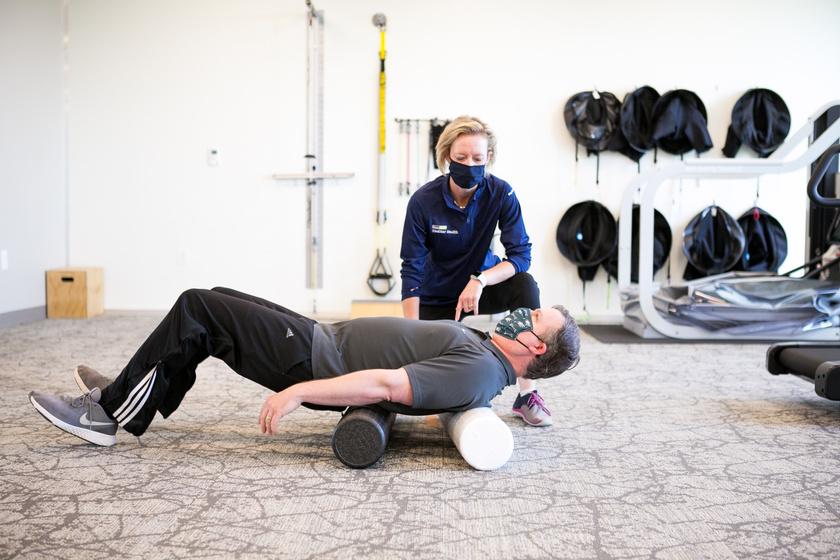
knowledge, the individual and the practice setting may enable or hinder the uptake of new knowledge into practice Individuals are embedded within a practice setting, and as such factors within the organization (e.g. organizational readiness) may constrain or enable the individual’s efforts for change. The gap between the production of scientific evidence and application in day-to-day practice is referred to as the knowledge-topractice gap. The fields of knowledge translation (KT) and implementation science (IS) provide a systematic, practical and theoretical approach for increasing awareness, dissemination, adoption and implementation of research evidence into day-to-day practice
A widely accepted definition of KT, as defined by the Canadian Institute of Health Research (CIHR), “the exchange, synthesis, and ethically sound application of research findings with a complex system of relationships among researchers and knowledge users” does not however address the implementation of new knowledge Implementation science examines how research evidence works in actual healthcare settings, and what changes will support the implementation of new knowledge for the benefit of patients.
 Susan Rabinowicz, PT, DPT, MS, PhD
Susan Rabinowicz, PT, DPT, MS, PhD
Implementation science has been defined by Eccles et al as the “scientific study of methods to promote the systematic uptake of research findings and other evidence-based practices into routine practice; and hence to improve the quality and effectiveness of health services” Nilsen (2015) describes the “diffusion-dissemination-implementation continuum as follows; diffusion is a passive, untargeted means of spreading information on new practices; “dissemination is an active spread of new practices to a targeted audience using planned strategies”; and implementation is the actual process of using new practices
Implementation science provides multiple theories, models and frameworks (TMF’s) to address the challenges of embedding best practices into routine healthcare. The TMF’s associated with implementation science have incorporated theories from psychology, sociology, and organizational theory with the TMF’s that have emerged from the discipline of implementation science. This contribution of various disciplines speaks to the complexity involved in changing practice behaviors. The variety of TMF’s have developed to (1) understand what influences implementation outcomes, (2) identify contextual factors, (3) develop targeted strategies and (4) enable individual and organizational change within clinical practice settings.
Five categories of theoretical approaches are described in the implementation science literature; (1) process models, (2) determinant frameworks, (3) classic theories, (4) implementation theories, and (5) evaluation frameworks. It is now recognized by implementation researchers that more than one theory may be used to guide a project of moving new evidence into practice. For example, a process model such as the Knowledge-toAction Framework outlines phases or stages of the research to practice process The Theory of Diffusion, a classic theory, emphasizes characteristics of the new knowledge
 Susan Rabinowicz, PT, DPT, MS, PhD
Susan Rabinowicz, PT, DPT, MS, PhD
The Consolidated Framework for Implementation Research (CFIR) is often used to understand barriers and enablers within the various environmental layers of a practice setting, and the COM-B (Capacity-Opportunities-Motivation-Behaviour) suggests that behavior is a result of interaction among individual capacity, opportunities and motivation factors. Understanding the capacity of individuals to engage in KT is an important component of implementing new practices within a system of care In a 2018 article the authors share their findings on a set of initial Core KT Competencies (knowledge, skills and attitudes) to build individual capacity for engaging in KT
The field of knowledge translation and implementation science has evolved to provide targeted strategies, theories and frameworks to improve the implementation and sustainability of evidence informed practices within healthcare settings Publications on the effectiveness and benefits of applying a KT approach for the adoption and implementation of research evidence have been documented in the literature In a 2017 article, the authors report on six research studies that applied implementation strategies to guide the implementation of EBP into various practice settings. In a 2021 scoping review the authors share their findings on the use of KT theories models, models, and frameworks (TMFs) as a means to change practice behaviors in rehabilitation settings
An important next step is to consider the capacity of individual physical therapists, as well as health care organizations to adopt a KT approach. As a profession, we can contribute to lessening the reported 17 years that it takes for embedding research evidence into practice through engaging in the practice of knowledge translation, as well as contributing to the research on implementation science PTs and PTAs can have an impact on reducing the recorded time it takes from moving evidence into practice through integrating KT/IS across the pillars of practice, research, education and professional development The key messages highlighted below are important take away messages from the expanding body of literature on KT practice and implementation science.
 Susan Rabinowicz, PT, DPT, MS, PhD
Susan Rabinowicz, PT, DPT, MS, PhD
Key Message 1: Implementation of evidence-based practices within diverse practice settings involves focusing on contextual factors, individual factors and characteristics of the new practice.
Key Message 2: Selecting a theory, model, framework to guide the implementation of a new practice will provide a systematic approach for change
Key Message 3: Building the capacity of the physical therapy profession to implement a theoretical approach for practice change has the potential to enhance the health and wellbeing of clients and patients, as well as their quality of life.
Key Message 4: Through collaborative efforts PTs, PTAs, researchers, clinicians and academia can contribute to the research on implementation science
